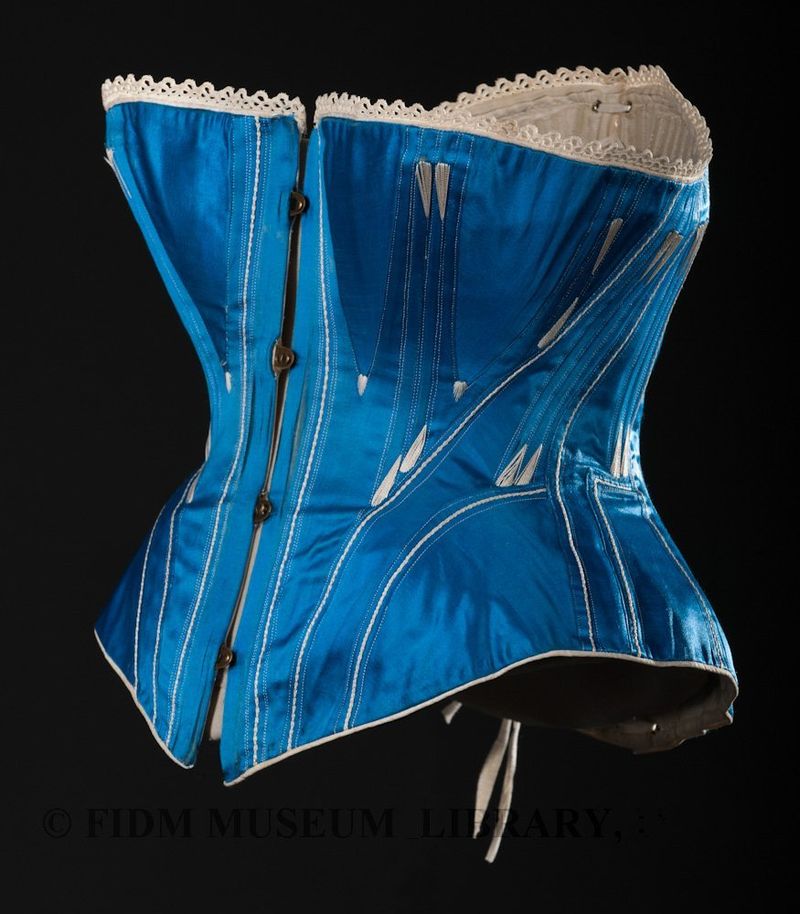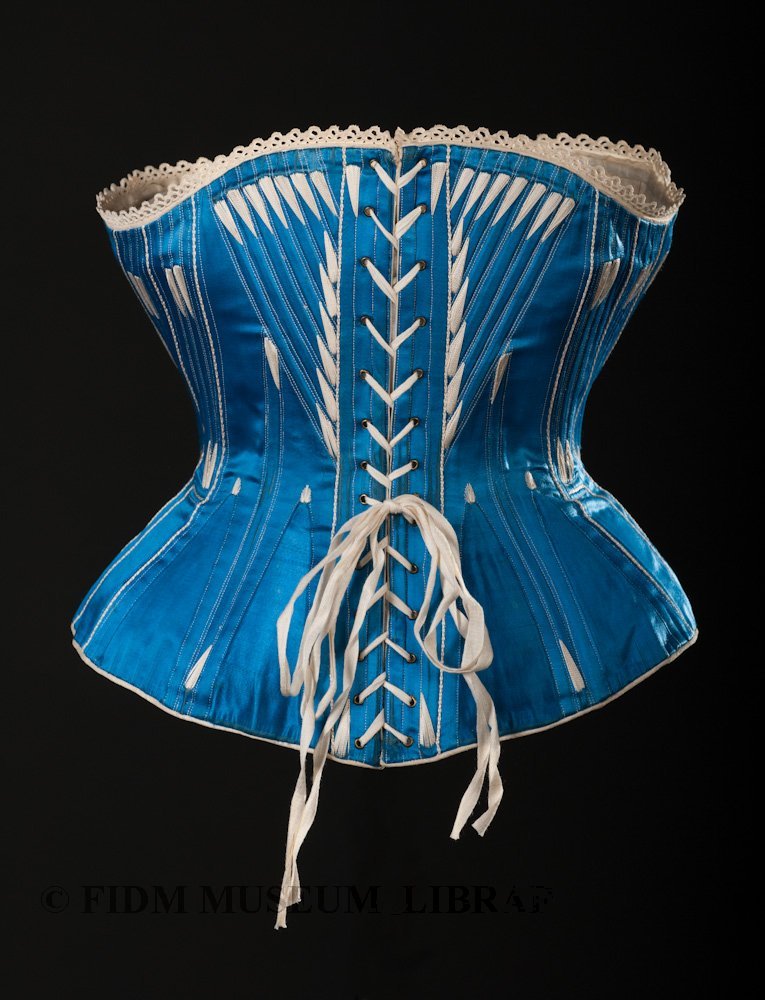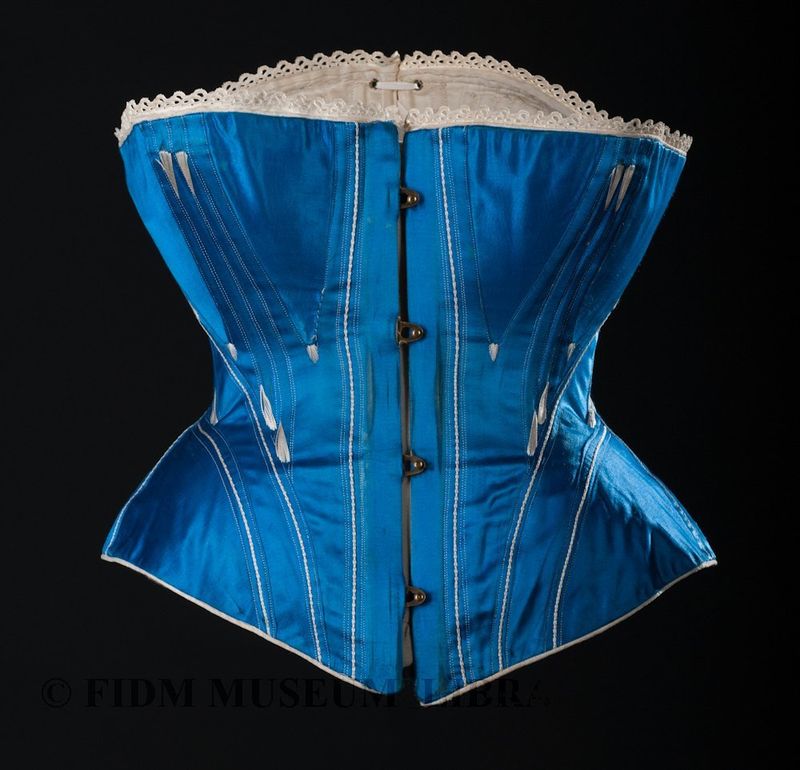Blue corset, c. 1868-1874
 Corset
Corset
c. 1868-1874
FIDM Museum Purchase
2011.5.28
In the late 1860s, the fashionable bodice fit smoothly over a curvaceous corset that emphasized the bust. Skirts flared from a high, compressed waist, so corsets were shaped to place somewhat less pressure on the hips. The resulting silhouette, though hidden under layers of fabric, was a shapely hourglass. As seen in in our blue silk satin corset, godets at hip and bust allowed for a relatively roomy fit. Strategically placed whalebone, cane or steel boning shaped the corset, compressing the body into the desired silhouette. Because of its full bust and rounded hips, the wearer's waist would appear relatively small in comparison, regardless of its actual size. When fully laced and fastened, the waist circumference of this corset is about 22 inches.
Like most corsets of this era, our corset features both back lacing and metal slot-and-stud fasteners in the front. Though the lacing controlled the fit and tightness of the corset, the slot-and-stud fasteners enabled a woman to dress and disrobe without assistance. Because the original silk laces are very fragile, we laced the corset with twill tape in a style similar to that used in "lazy lacing." To lazy lace a corset, the wearer laced her corset so that two tabs or loops of lacing extended from each side at the corset's waist. Once she'd fastened the slot-and-stud closures, the wearer simply pulled the back loops to adjust and tighten the fit.
Though corsets were generally hidden under many layers of clothing, they were often made with an eye to beauty, not just function. In the second half of the 19th century, brightly colored, carefully detailed corsets became increasingly popular. In 1871, Harper's Bazaar noted this trend: "The demand for colored corsets increases every winter, the prejudice against them giving way gradually."1 The article recommended that brides wear white satin corsets, while scarlet or gray merino wool corsets decorated with white embroidery were encouraged for winter warmth. The white detailing seen on this corset is both decorative and functional. Hand-made lace trims the top, while white stitching emphasizes the corset's silhouette. Embroidered white teardrops are more than decoration; they reinforce the ends of the boning channels.
By the late 1860s, ready-made corsets were widely available. Fashion magazines sometimes provided instructions for making corsets, though the process was very labor intensive. If the instructions published in “Corset Making,” an October 1869 Harper’s Bazaar article, are accurate, making a corset at home was a difficult procedure, requiring a sophisticated understanding of how to unite pliable fabric and rigid whalebone in a supportive, flattering undergarment. For those able to afford it, Harper’s Bazaar advocated the purchase of a custom-made corset, as “the ordinary cheap corset has neither beauty of contour nor compactness of construction.”2 Though we don't know the exact origins of our blue and white corset, its quality and appearance suggest it was probably custom-made in Paris.
1. "New York Fashions." Harper's Bazaar 7 Oct. 1871: 627.
2. "New York Fashions." Harper's Bazaar 5 Sept. 1868: 706.

